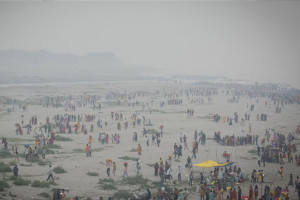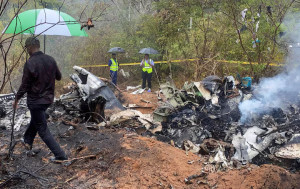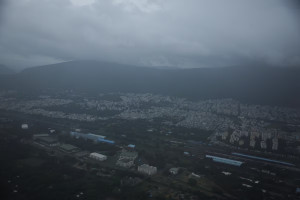World
Diwali fireworks generate 'hazardous' polluion in Delhi
Pollution soared to hazardous levels in Delhi on the night of Diwali, the Hindu festival of lights, reaching 40 times the limit recommended by the World Health Organisation, reports say.
Pollution soared to hazardous levels in Delhi on the night of Diwali, the Hindu festival of lights, reaching 40 times the limit recommended by the World Health Organisation, reports say.
Massive quantities of fireworks go up in smoke during the festival.
On Wednesday night, the levels of PM10 particulates, which are very hazardous to health, rose to 2,000 micrograms per cubic metre, reports said.
The WHO recommends a maximum of 50 micrograms per cubic metre.
Ahead of the festival, the government in Delhi had appealed to residents to stay away from fireworks.
'Drastic deterioration'
The Times of India reported that the air quality in the Indian capital "deteriorated drastically" on Wednesday evening "breaching all safety standards by several times".
The newspaper said that PM10 levels in many parts of the city had crossed 1,000 micrograms per cubic metre, with Delhi's most polluted area Anand Vihar, recording a high of 2,000 micrograms per cubic metre.
In stark contrast to Beijing where levels of PM10 (particulate matter up to 10 micrometres in size) decreased by about 40% between 2000 and 2013, Delhi's PM10 levels have gone up by about 47% from 2000 to 2011.
Levels of sulphur dioxide, which can lead to a spike in asthma, bronchitis and bronchiolitis, were also found to be very high in many areas.
A World Health Organization (WHO) survey in 2014 found that 13 of the most polluted 20 cities in the world were in India. Delhi was the most polluted city in the world, the survey added.
Air pollution is also a leading cause of premature death in India, with about 620,000 people dying every year from pollution-related diseases, says the WHO.
Apart from fireworks on Diwali, Delhi's pollution in winter is aggravated by a drop in temperature which leads to the city's poor burning rubbish at night to stay warm.
Agricultural waste is also set on fire across thousands of hectares around Delhi to clear cropland, which burns for days on end.




 22.12°C Kathmandu
22.12°C Kathmandu













